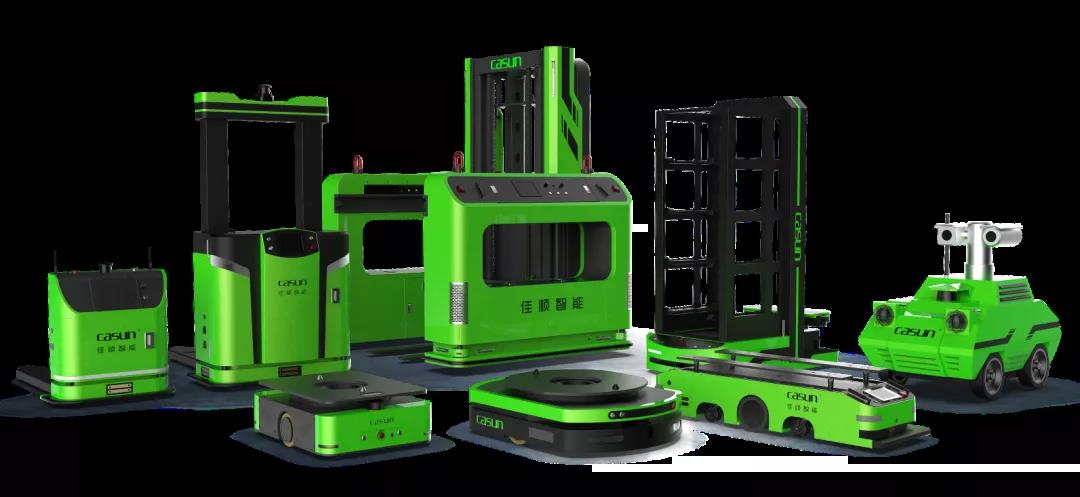 Focus on AGV industry for 18 years
Focus on AGV industry for 18 years
 Focus on AGV industry for 18 years
Focus on AGV industry for 18 years
With the advent of the new industrial era, smart factories, unmanned workshops, and manufacturing enterprises have an increasing demand for intelligent logistics handling. Enterprises can realize unmanned and intelligent handling by using autonomous mobile robots (AGV), which can significantly improve the overall operation efficiency of the factory compared with traditional manual handling.
AGV is the unmanned handling vehicle, that is, an "automatic guided vehicle", which is widely used in the transfer of materials or finished products between production lines and warehouses. The AGV cross-floor handling technology independently developed by CASUN enables the automated guided vehicle China to interact with elevators or electronic doors on its own, and automatically complete the floor conversion and regional transfer actions of AGVs entering and leaving elevators, electronic doors, etc., effectively solving the problem of cross-floor and multi-zone material handling.

In order to reduce the number of elevator round trips, improve the carrying efficiency of elevators, and meet the needs of fast-paced operation scenarios, CASUN has developed a cross-floor handling system that allows elevators to accommodate 2 or more AGVs entering and exiting at the same time, and has been popularized and applied in many industries, reaching the industry-leading level.
Hardware requirements for the docking of AGV and elevator:
(1) The control box of the elevator is equipped with a wireless docking system provided by CASUN.
(2) The signal interaction between the wireless docking system and the elevator controller is carried out according to the communication protocol (CASUN has established a standard protocol for AGV and elevator communication with a number of well-known elevator brand manufacturers).
(3) When the AGV interacts with the elevator signal, the wireless docking system will send the wireless signal sent by the AGV to the elevator controller. At the same time, the wireless docking system will collect the floor signal of the elevator controller and the elevator status signal, and then send the wireless signal to the AGV to realize the signal interaction between AGV and elevator.
(4) When the AGV is docked with the elevator, the signals sent by the AGV are: the signal of each floor of the elevator, the signal of opening the door, the signal of closing the door; the signals sent by the elevator controller collected by the wireless docking system are: the signal of each floor of the elevator, the leveling signal, the signals that the door opening is completed and the door closing is completed.
(1) When the docking technology of AGV and elevator is not perfect, enterprises rarely consider introducing AGV cross-floor handling projects. Usually, AGV is used to pull the trolley to the elevator entrance, and the personnel and the trolley enter the elevator together. After reaching the designated floor, the personnel will then pull the trolley to the end point. In this way, the AGV is used to transport materials. This is not only a waste of manpower, but also because the door opening and closing time is uncontrollable in the process of people entering and exiting the elevator, and safety accidents such as pinching and crashing are prone to occur.
(2) After the docking technology of AGV and elevator is mature, enterprises are more concerned about the stability and safety of docking between AGV and elevator, such as signal loss or signal transmission and reception errors, etc., which cause AGV to not work normally when docking with elevator. Through technical research, CASUN has successfully solved pain points in the industry such as signal disconnection, signal loss and signal malfunction that occur with a small probability when the AGV is connected to the elevator. And CASUN has cooperated with the elevator manufacturer to formulate the communication protocol between the AGV and the elevator, so as to achieve closed-loop control, and ensure that the communication connection is 100% normal.
(3) On the premise that the connection between the AGV and the elevator is stable and reliable, the customer proposes that the operating efficiency of the elevator should be improved to reduce unnecessary waiting. In this regard, AGV manufacturers need to solve the difficulty of 2 or more AGVs entering and exiting the elevator at the same time. In addition, when the frequency of elevator use increases, there will be multiple AGVs waiting in line at the elevator entrance. In response to the above requirements, CASUN dispatches and controls AGVs through the host computer system, and combines the independent communication technology between AGVs to successfully solve the above problems. It realizes that multiple AGVs enter and exit the elevator in a reasonable and orderly manner, avoids congestion at the elevator entrance, and enables smooth and orderly logistics transportation.
From warehouse to workshop, and then from workshop to warehouse, cross-floor handling does not fully reflect the operational advantages of AGVs. Through the docking and integration of the AGVS system and the MES or WMS system, the AGVS system can complete the logistics handling tasks efficiently, accurately and flexibly with the help of system information management platforms such as MES/WMS, which improves the flexibility of production and the competitiveness of enterprises.